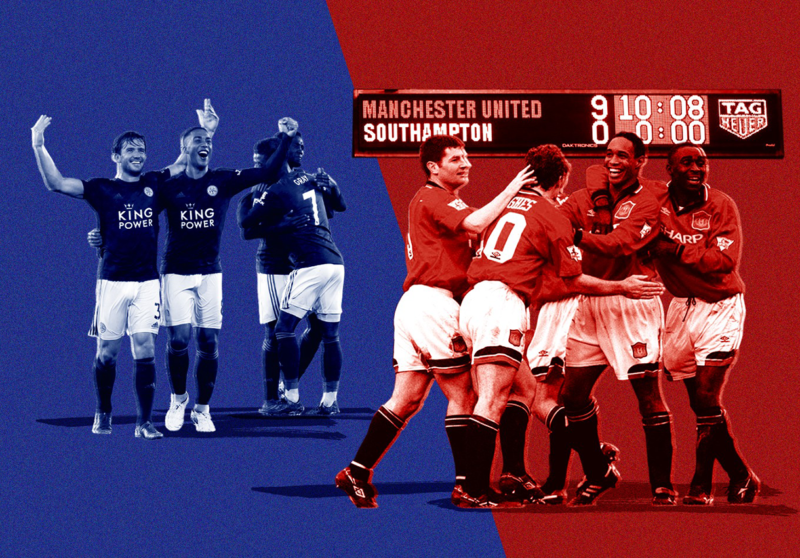
The English Premier League (EPL), established in 1992, has transformed English football on multiple levels, from playing style and broadcasting rights to club ownership and global reach. This article explores how the EPL has evolved since its inception, highlighting the major changes that have shaped it into one of the most popular and competitive leagues in the world.
1. The Birth of the Premier League
The formation of the EPL in 1992 marked a turning point for English football. Driven by the need for greater revenue and global visibility, England’s top 22 clubs broke away from the Football League to form a new league:
- Improved Financial Structure: The new league allowed clubs to secure higher revenues through TV deals and sponsorships.
- Global Appeal: With ambitious marketing, the EPL quickly became one of the most-watched leagues worldwide, setting the stage for its future growth.
The creation of the Premier League redefined English football, introducing a more commercialized and fan-centric approach.
2. The Impact of Broadcasting Deals
Broadcasting rights have played a critical role in the EPL’s growth. In 1992, BSkyB (now Sky Sports) signed a landmark deal to broadcast live games, which was revolutionary at the time:
- Increased Revenue: The deal generated unprecedented income for clubs, which has continued to grow with each renewal cycle.
- Global Viewership: The EPL became accessible to millions of viewers worldwide, raising its profile and fan base globally.
Today, the EPL enjoys multi-billion-pound broadcasting deals, enabling clubs to invest heavily in players, facilities, and youth development.
3. Foreign Influence and International Stars
One of the EPL’s biggest transformations has been the influx of foreign players and managers. In the early days, English players dominated the league, but that began to change in the mid-1990s:
- Increased Talent Pool: Foreign players have brought new skills, styles, and diversity to the league, elevating the overall quality of play.
- Influential Managers: Managers like Arsène Wenger, José Mourinho, and Pep Guardiola have introduced new tactics and training methods, transforming the league’s playing style.
This international influence has made the EPL a melting pot of footballing styles and one of the most competitive leagues in the world.
4. Tactical and Playing Style Evolution
English football was once known for its physicality and long-ball style. However, the EPL has since embraced a more diverse and tactical approach:
- Possession-Based Football: Influenced by foreign managers, many clubs now prioritize possession and technical play.
- High-Pressing Game: Teams increasingly adopt high-intensity pressing tactics to regain possession quickly, reflecting modern trends in global football.
The evolution in playing style has led to a faster, more entertaining game that attracts fans and players from around the world.
5. Club Ownership and Financial Power
Another major shift has been the rise of billionaire owners and financial investments from abroad. Since the early 2000s, several clubs have seen significant changes in ownership:
- Wealthy Owners: Clubs like Manchester City and Chelsea received substantial financial backing from wealthy owners, allowing them to sign top talent and achieve rapid success.
- Financial Fair Play (FFP): Introduced by UEFA, FFP regulations aim to prevent clubs from overspending beyond their means, encouraging financial stability.
While big money has transformed the league, it has also sparked debates about financial disparity between clubs and the sustainability of such investments.
6. Youth Development and Homegrown Talent
In recent years, the EPL has placed more emphasis on nurturing young talent through academies and youth programs:
- Academy Systems: Clubs have invested heavily in youth academies, producing players like Marcus Rashford and Trent Alexander-Arnold.
- Homegrown Rules: The EPL’s homegrown player rule encourages clubs to develop domestic talent, balancing the influx of foreign players.
This focus on youth development not only promotes sustainability but also strengthens England’s national team by providing a steady stream of skilled players.
7. Rise of Digital Media and Fan Engagement
Digital media has allowed the EPL to engage with fans like never before:
- Social Media and Streaming: Fans can now watch highlights, follow live updates, and interact with clubs and players on social platforms.
- Global Fan Communities: The EPL has millions of fans worldwide, and digital media fosters a sense of connection and community across borders.
The EPL’s digital presence has been instrumental in maintaining its popularity and ensuring fans remain connected to their favorite teams.
8. The Impact of COVID-19
The COVID-19 pandemic had a profound impact on football, with games played behind closed doors and financial challenges affecting many clubs:
- Empty Stadiums: The lack of fans affected the atmosphere and income from ticket sales, challenging clubs to adapt.
- Streaming and Broadcast Reliance: With fans unable to attend games, digital broadcasts became even more crucial for fan engagement and revenue.
While challenging, the pandemic also demonstrated the resilience of the EPL, which adapted quickly to ensure continuity during unprecedented times.
Conclusion
The evolution of the EPL since 1992 reflects changes in football, technology, and global economics. From its commercialized beginnings to its status as a global footballing powerhouse, the EPL has continually adapted to the demands of modern sport. The league’s focus on diversity, tactical sophistication, and fan engagement has cemented its place as one of the most exciting and influential leagues in the world.
As the EPL looks to the future, it will continue to evolve, balancing financial interests with the passion and integrity of the game. The journey of the EPL is a testament to the transformative power of football and the universal appeal that makes it more than just a sport.





